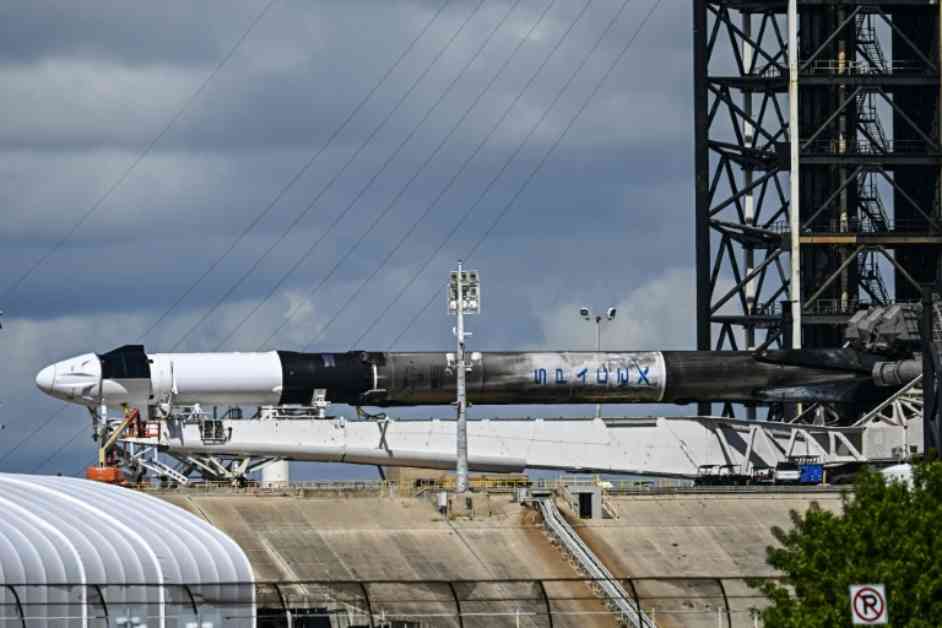SpaceX’s historic Polaris Dawn mission made headlines yesterday as billionaire entrepreneur Jared Isaacman became the first person to complete a private spacewalk. The mission, which marked a major milestone for privately funded space ventures, saw Isaacman and his crewmates venture into the vacuum of space alongside two SpaceX employees in a groundbreaking moment for space exploration.
The Polaris Dawn Crew
The crew for this historic mission included Isaacman, a retired military fighter pilot, and two SpaceX employees. They launched from NASA’s Kennedy Space Center in Florida at approximately 5:23 am EST (0923 GMT) and within ten minutes, the Crew Dragon capsule reached orbit, setting the stage for a successful journey into space.
As the capsule reached zero gravity, the crew engaged in a playful moment, batting around a small plush astronaut toy dog to symbolize the transition into free-fall. Shortly after, Crew Dragon separated from its support trunk, providing the crew and viewers on Earth with a breathtaking view of the capsule over the sunlit planet.
SpaceX Launch Director Frank Messina addressed the crew via radio, praising their courage and teamwork as they embarked on their mission. He expressed confidence in their abilities to carry out the tasks ahead and sent his well wishes from the ground to the crew in space, emphasizing the significance of their journey for future explorers.
A Major Milestone for Private Spaceflight
The Polaris Dawn mission represents a significant achievement for privately funded space ventures, as it marks the first time a privately funded crew has conducted a spacewalk. While government astronauts have been conducting spacewalks for decades, this mission opens up new possibilities for privately funded space exploration efforts.
During the historic spacewalk, Isaacman and SpaceX engineer Sarah Gillis exited the Crew Dragon capsule and ventured into space for around 10 minutes each. While Isaacman and Gillis were the only two crew members to leave the spacecraft, all four participants tested newly designed spacesuits during the event.
Due to the lack of a pressurized airlock on the Crew Dragon, the entire capsule had to be depressurized, exposing it to the vacuum of space. The primary objective of the mission was to test technologies and procedures that could be used in future long-duration space missions, potentially paving the way for more ambitious space exploration efforts.
Overcoming Challenges
The Polaris Dawn mission faced several challenges leading up to its successful launch. Originally scheduled to launch last month, the mission was postponed due to a small helium leak in ground equipment at SpaceX’s launchpad. Although the issue was resolved, a separate Falcon 9 booster recovery failure prompted U.S. regulators to ground the rocket, further delaying the mission.
Despite these setbacks, the mission successfully launched on Tuesday, with weather conditions causing a two-hour delay in liftoff. The Falcon 9 booster landed safely on a seaborne pad, showcasing another victory for SpaceX’s reusable rocket technology and demonstrating the company’s resilience in overcoming challenges.
Battling Conspiracy Theories
Following the historic spacewalk by Isaacman and the Polaris Dawn crew, conspiracy theories began circulating online, with some skeptics claiming that the footage of the event was staged. Echoing long-standing conspiracy theories about the Apollo moon landings, viewers on various platforms accused SpaceX of faking the spacewalk, despite the live-streamed footage showing Isaacman and Gillis in space.
Some viewers took to social media to express their doubts, with one user writing, “That looks just as fake as when NASA faked it,” while another commented, “Until I fly to Space, I’m convinced this s*** is faked. Anyone with a brain can f****** tell.” Despite the lack of evidence to support these claims, conspiracy theories continue to persist.
SpaceX live-streamed the entire spacewalk, showing Isaacman as he became the first to exit the capsule around 6:50 am ET. Using a scaffold-like framework for stability, Isaacman conducted planned movements to test his pressurized spacesuit, followed by Sarah Gillis who followed a similar protocol. Despite the live footage, conspiracy theories surrounding the authenticity of the spacewalk persisted.
A Long History of Space Conspiracies
Conspiracy theories surrounding space missions are not new and have often targeted significant events such as the Apollo moon landings. Sceptics have pointed to supposed anomalies in photos and videos from these missions, citing factors like the direction of shadows, the absence of stars, and the movement of flags as evidence that the events were staged.
Despite overwhelming evidence and decades of scientific proof confirming the legitimacy of space missions, conspiracy theories continue to gain traction. Like the Apollo moon landings, claims against the authenticity of the Polaris Dawn mission have been debunked, highlighting the persistence of misinformation and skepticism in the realm of space exploration.
In conclusion, SpaceX’s Polaris Dawn mission and the historic spacewalk by Jared Isaacman mark a significant achievement for privately funded space ventures. Despite facing challenges and battling conspiracy theories, the mission represents a step forward in the advancement of space exploration and the possibilities for future missions in space. As the boundaries of private spaceflight continue to be pushed, the legacy of the Polaris Dawn mission will undoubtedly leave a lasting impact on the future of space exploration.













